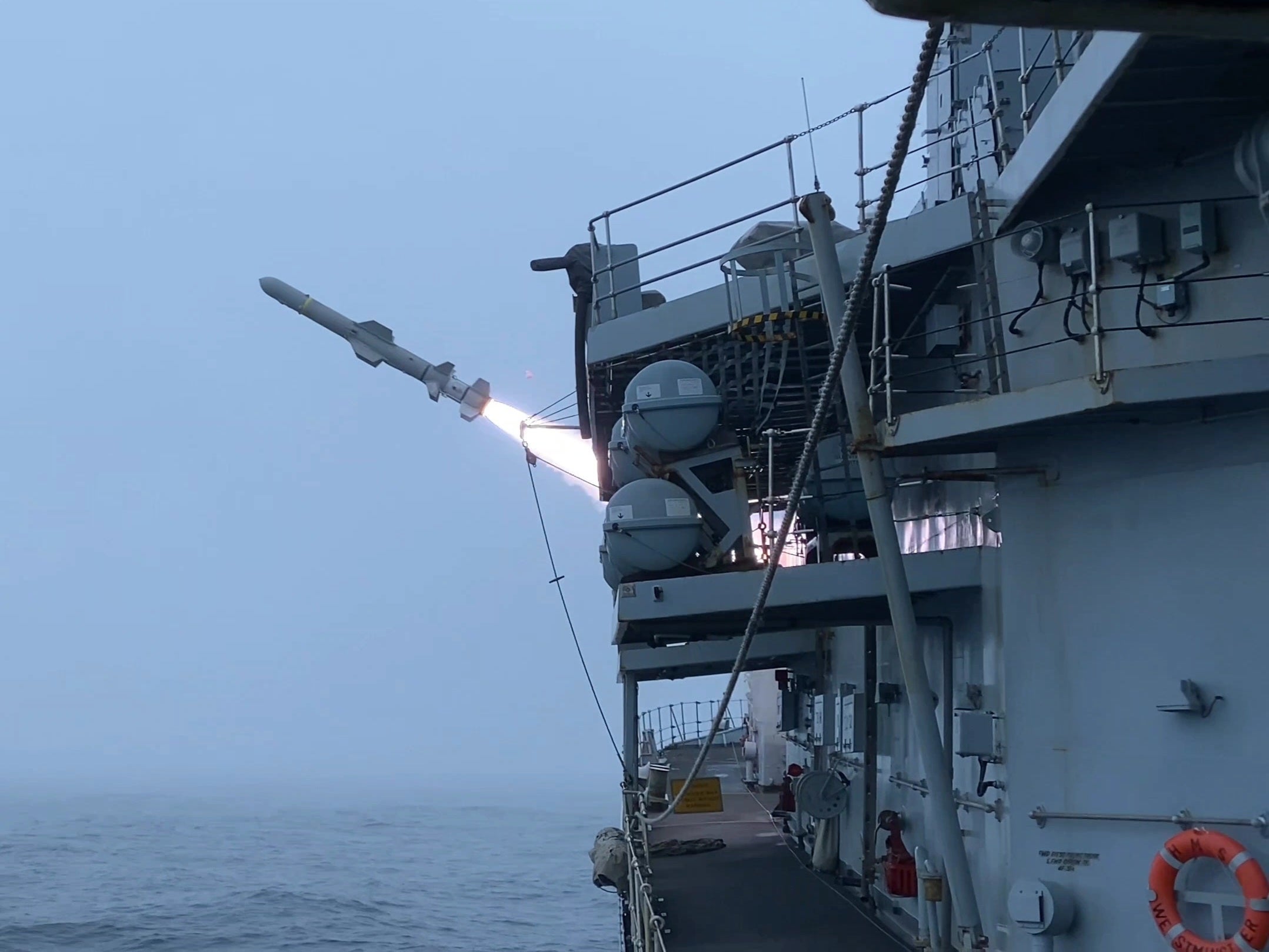Navy and RAF use high-powered weaponry to sink warship in exercise
The exercise, which took place in the North Atlantic, was the first time in 18 years that the Royal Navy had targeted a real warship.

Your support helps us to tell the story
From reproductive rights to climate change to Big Tech, The Independent is on the ground when the story is developing. Whether it's investigating the financials of Elon Musk's pro-Trump PAC or producing our latest documentary, 'The A Word', which shines a light on the American women fighting for reproductive rights, we know how important it is to parse out the facts from the messaging.
At such a critical moment in US history, we need reporters on the ground. Your donation allows us to keep sending journalists to speak to both sides of the story.
The Independent is trusted by Americans across the entire political spectrum. And unlike many other quality news outlets, we choose not to lock Americans out of our reporting and analysis with paywalls. We believe quality journalism should be available to everyone, paid for by those who can afford it.
Your support makes all the difference.The Royal Navy and RAF have teamed up with the US to destroy and sink a warship in the first exercise of its kind in 18 years.
Type 23 frigate HMS Westminster, a Wildcat helicopter and three RAF Typhoon were involved in the live-fire practice using high-powered weaponry to sink the decommissioned frigate USS Boone.
The exercise, which took place in the North Atlantic, was the first time in 18 years that the Royal Navy had targeted a real warship and the first time the Typhoon had been used to drop live ordnance on a warship at sea.
Commander Ed Moss-Ward, Commanding Officer of HMS Westminster, said: “Atlantic Thunder has demonstrated that UK and US naval and air forces can work together to deliver an end-to-end kill chain against a maritime target at long range.
“The integration of high-end weapons, sensors and communications with our Nato allies is key to the collective war fighting capability of the alliance demonstrated by the sinking exercise.
“The firings have supported the development of the Royal Navy’s targeting and weapon capabilities, and afforded opportunity to conduct realistic training to validate tactics and operating procedures.”
A Navy spokesman said: “It was a rare live test of complex weapons against a realistic target far out to sea and tested the power and accuracy of naval and air forces, giving allies real-world experience of hitting targets at sea from long range and proving the capability of several advanced warfighting and targeting techniques.
“Type 23 frigate HMS Westminster fired two Harpoon anti-ship missiles at the same time as a US P-8 Poseidon patrol aircraft launched one of its own – 660kg of high explosive striking ex-USS Boone simultaneously.
“The frigate’s Wildcat helicopter quickly followed, punching Martlet air-to-surface missiles into the Boone’s hull.
“This was the first firing of the Fleet Air Arm’s new anti-ship weapon against a realistic target at sea – to this point Martlet had only been used against purpose-built targets.
“The Wildcat’s crew stayed airborne and used the on-board laser-targeting pod to guide in a Typhoon fighter from 41 Squadron RAF to launch Paveway IV precision-guided munitions against the target.
“This was the first time an RAF Typhoon had dropped live ordnance onto a warship used as a maritime target and the first time a Royal Navy helicopter had guided the Paveway IV on to its bullseye.”
The Navy spokesman added that all toxic materials and pollutants had been removed from the USS Boone, which was retired in 2012, prior to it be used as a target.